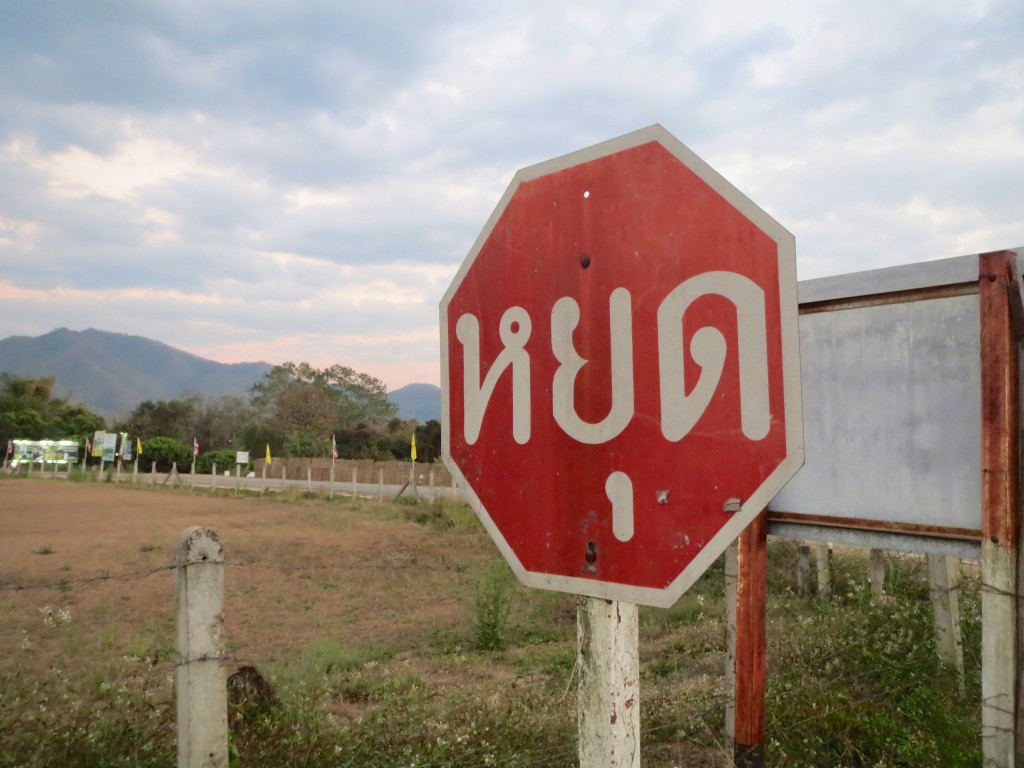Written by Chris
Pai, Thailand – The term “kung fu” comes from the Chinese term Gōngfu (功夫). It consists of two characters whose meanings can be translated as an “achievement” and “effort”. In other words, it is an accomplishment that requires great time and energy to achieve. It is also in no way tied to martial arts in Chinese and you can be “Gōngfu” at anything; Gōngfu cooking, Gōngfu pianist, or Gōngfu knitting, if you want. It just means that you have gained mastery over your art over a long period of dedicated work. So it came as no surprise that traditional kung fu instruction is very slow-paced and very deep.
A thousand years ago, if you wanted to learn a martial art, you would have to seek out a master and first prove your dedication to the art. Once the master knew he wouldn’t be wasting his time on you and accepted you as a student, the training would likely start with one core move, one stance, or one exercise. The master would leave you to practice that one thing sometimes for months or even up to a few years. He may come and critique you or correct your form or he may not, but the point is for the student to build up the foundational principles through their own persistent work.
I am packing up today, my last day of kung fu training, and I have been reflecting on the things I have been learning in the last month and how the learning methods contrast with how I am used to being taught. The first thing that stands out is that it is taught as a system, not a linear, a-la-carte process like today’s education system. I have come to think of it like building a house. You start with a foundation, a few basic concepts like stance, positioning, making a proper fist. Then you add a frame, in our case it was various forms, sequences of moves to practice. Then you continue to add to the house’s structure, walls and floors and roof (more positions in the forms). You add the systems such as plumbing and electrical (controlling your breath and your gaze). You finish everything up and make it useable. And then you add little details, finishing touches, personalization, and you continue to refine and refine for years and years to make it just right. But the house, like kung fu training, is never really complete. It is a continuous process.
I am also fascinated by the emphasis here on not just learning the external but also the internal aspects. The external is what I am doing with my body, where I am holding my arm for a block for example, but the internal is what is going on in my mind. We talk about things like moving (or striking) with intent not strength, about focusing on the feel of our bodies, and about keeping mindful and staying present in our thoughts. It is the kind of thing that an instructor cannot show you how to do. He can give you some tips, but ultimately it is up to you to develop on your own. You can mimic the external actions of kung fu without getting any of the results if you do not have the internal skills as well.
There were many things I thought I might learn before I came here. There were basics like punching, kicking, and blocking. Perhaps I would learn some ancient training techniques like punching a tree to toughen my fist or running across standing logs to improve balance. Or maybe I could learn some fancy moves like a roundhouse kick or maybe even the 5 point palm exploding heart technique. We did almost none of this. The reality of what I learned was much more valuable:
- How to stand – The stance was the most important skill and we used it in almost everything. It means almost everything in a confrontation and without it you are easily overtaken. The really key part for me was keeping a straight spine. My lower back feels a lot better, I can breathe easier with the chest up, and I’m even a bit taller. I can really appreciate the value of good posture now.
- How to breathe – Again, we practiced breathing in most all of our exercises and coordinated it with our movements. At first, I felt like I was suffocating as I tried to breathe from my belly rather than the chest, and to hold it through some sequences. But now, I feel my breath coming so much easier, not just in training but all the time. It is slower and deeper and I feel so much more relaxed. Another great skill to have.
- How to focus – We do a fair amount of meditation practice both stationary and while performing some of the forms. The objective is to keep the mind centered on the present moment and out of the past and future. I know that I, like most people, usually have my mind buzzing with things I need to do but there is no room for that in kung fu. Quieting my mind has been incredibly refreshing and, even in spite of all the hard physical training, I find I am sleeping less at night since I get plenty of mental rest during the day. Mindfulness is magical.
So perhaps it wasn’t everything I was expecting, but the experience has been incredibly valuable in ways I would not have expected. I have trained here with some interesting people from all over the world, and it has been a pleasure to learn from Master Iain and his crew. If you feel like taking a trip to northern Thailand, I can highly recommend the Nam Yang Kung Fu Retreat. It has been well worth the trip.
Here is Master Iain taking an axe to the stomach:


I’m glad it was such a worthwhile experience for you.
Chris, I do read all the posts! Interesting stuff! Thanks for always sharing your experiences and Mindy’s!